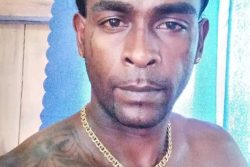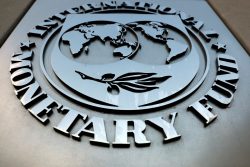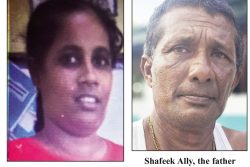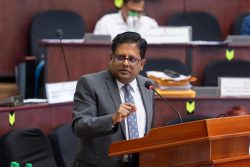Dear Editor,
In my letter published under the caption “A Multi – racial front against the government is not possible” (07.10.02) I had pointed out that there are two options open to the African Guyanese community in its attempts at achieving political and economic parity. The Editor of SN in exercising his editorial discretion struck out the option of “support an armed resistance and give it political legitimacy”. It was not surprising that SN chose to highlight one of the options I recommended i.e. the option of massive street protest and other forms of peaceful struggle and not the other. To all appearances SN has great difficultly with the thought of armed struggle as an option to resolving Guyana’s political problems. This is understandable, and it is my hope that as a nation we can somehow find a political solution to our problems which does not require us going down the road of armed confrontation.
Objectively, the rulers’ actions are driving the country in the direction of armed conflict and merely wishing it away is no guarantee that it will not occur. Because of the present disposition of the political forces in the country and the failure of the opposition parties to win meaningful concessions from the rulers, normal politics is now viewed by the masses – particularly the African masses – as a waste of time. This important segment of Guyana’s population is fed up with the political machinations of the ruling party and is now looking to extra political forces for salvation. Additionally, the absence of decisive leadership by the parliamentary opposition parties, the rulers’ dictatorial form of governance and the feeling of alienation by the African masses from the country’s political process are elements that have combined and can make armed conflict unavoidable. Unless a meaningful alternative to what currently exists as Guyana’s political process is found in a reasonable time frame, the very option which so many of us fear will have to be faced.
The peaceful option is the one that is more attractive to many Guyanese. However, even this will require some form of struggle to be won: to succeed it will require the major involvement of the broad masses of people committed to occupying the streets and public places/institutions for a significant period of time. The question here is whether or not Guyanese are capable of doing what is required given the present low morale in the country, economic degradation and the fear of state repression. In this equation what also cannot be discounted is that in a period of civil unrest those extra legal forces, which supported the government in the 2000 – 2004 period are likely to re-emerge in support of the regime. Whether the masses will be willing to take police brutality and other forms of repression in a Gandhi/Martin Luther King manner is anyone’s guess. I am doubtful that African Guyanese cultural orientation will allow our people to respond in that manner. Anyhow, the answer to this question will only be settled in the world of practice rather than debate. How this question is answered will determine whether a protracted peaceful struggle is possible as a viable option, capable of achieving a negotiated solution.
In a featured International Viewpoint – “Non-Violent resistance in Burma has history (but not all of it) on its side” – in SN on October 7, 2007, political analyst, Jonathan Power, examined the history of peaceful protest to achieve political change in Burma (Myanmar) and other countries around the world. He concluded that at times it works and at other times it does not. He made the important observation that when faced with different situations in the same country the same oppressors tended to respond differently. In one circumstance they will concede to peaceful protest while in another, they behave like barbarians. To support his contention he pointed to two historic struggles in India where the oppressor was the British. On the one hand Gandhi’s peaceful protest against the “Civilized British” succeeded though not without serious problems, while on the other hand the Pathans non-violent struggle from 1930 was brutally suppressed by the British who “shot thousands of them, tortured, flogged and hanged them”
It should be noted that the extent to which the objectives of the struggles against the oppressors are achieved or not is determined not merely by the tactics and strategies adopted by the opposition but also rests to a large degree on the tactics and strategies employed by the oppressor. Often the extent to which oppressive regimes are willing to suppress peaceful protests violently is determined by how they see their vital interests being affected by the actions of those forces in the society that are opposed to them.
With the above in mind I am forced to ask what is the situation in relation to the struggle in Guyana?
To understand whether peaceful struggle stands a chance of achieving our political goal of shared governance/executive power sharing, we must examine the balance of forces in the society. Here we are speaking about an African Guyanese led struggle. I made the point in my letter of October 2, 2007 that a multi- racial struggle against the PPPC regime is preferable for all the known reasons. But it is my contention that the PPPC’s control of the Indian Guyanese community, and that community’s political culture, economic and social interests will not allow it to participate in the early stages of a struggle against the rulers whether that struggle is peaceful or otherwise. So what we are looking at in the immediate period ahead is a struggle waged mainly but not exclusively by African Guyanese.
Given the balance of forces in the country what are its chances of success?
I believe the answer to this question will be facilitated by the inputs of Comrade Dennis Wiggins and others with the necessary academic skills.
Yours faithfully,
Tacuma Ogunseye









